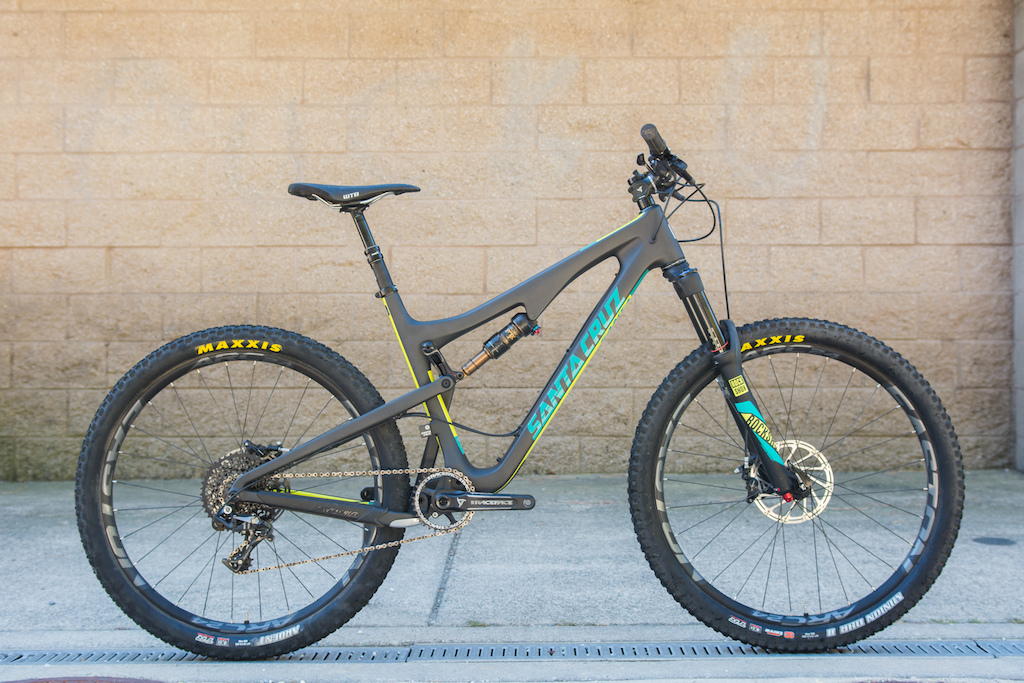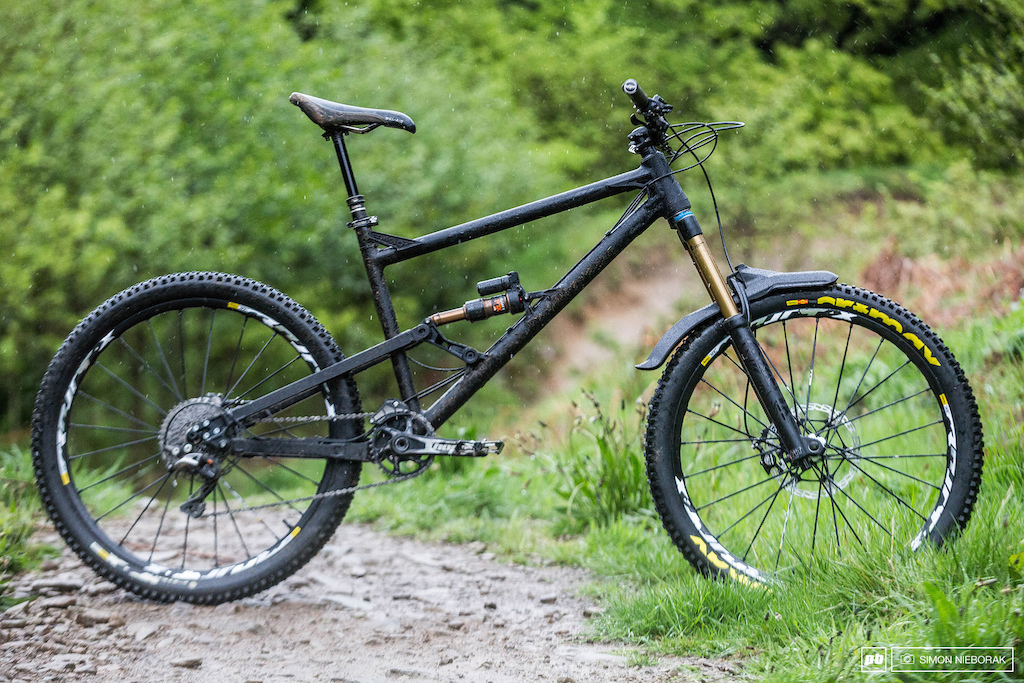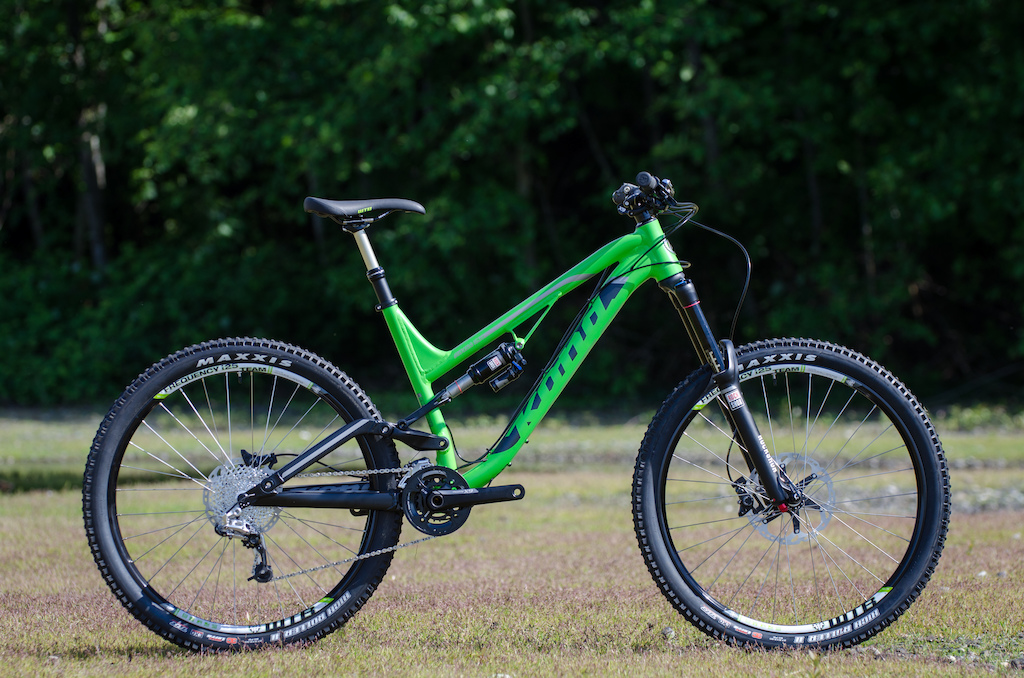Here at Pinkbike we get inundated with all kinds of questions, ranging from the basic "Can I have stickers" to more in-depth, soul-searching types of queries like if you should pop the question or what to name your first child. Ask Pinkbike is an occasional column where we'll be hand-picking and answering questions that have been keeping readers up at night, although we'll likely steer clear of those last two and keep it more tech oriented.
Skinny or Wide?Question: Pinkbike user AdamC86 asked this question
in the 27.5'' forum: I'm looking at purchasing my first 27.5'' wheeled bike, and I'm weighing my options between running either 27.5'' or 27.5+ wheels and tires. Most of the riding I do is in Michigan and on singletrack with a lot of short, punchy climbs with switchbacks, roots, etc.. Are the 27.5+ bikes much slower rolling than a standard 27.5'' bike? And will the wider tires take away some of the characteristics that have made 27.5'' so popular?
Any recommendations for bikes? I'm wanting to go full-suspension and am currently looking mostly at Santa Cruz's 5010 (27.5'') and a Salsa Pony Rustler (27.5+).
 | Wheel size talk usually garners a lot of hate, sometimes for valid reasons, but one thing that's awesome is how we have so many different tools to choose from to do the same job. All of these bikes do stuff a little differently, and part of the fun, at least for some people, is picking the one that best suits their needs.
I've spent a lot of time on a handful of 27.5+ bikes and have never felt them roll appreciably slower once up to speed. My stopwatch also confirms this, although they can feel slower because they're more forgiving, and the big tires and rims usually weigh more, so stop-and-go riding takes a bit more effort. Speed and effort aside, it's how the plus-sized tires act on the trail that sets them apart. I've found that 27.5+ rubber steals some of a bike's playfulness, which is the most important ride quality to me. For this reason, I'm not usually a huge fan 27.5+ machines. Regardless, they do excel on rocky, ledgy terrain where their higher volume is handy at taking the edge off of things. So, if you want a sporty feeling, precise bike that's playful, go with 27.5''. If you're more concerned with forgiveness, traction, and aren't the type of rider who pops and plays on a trail, the wider rubber might be a good choice.
That Pony Rustler is a sweet rig but, if it were me, I'd choose the Santa Cruz and run some wide rims and high-volume tires to get the best of both worlds.- Mike Levy |
What Geometry is Appropriate? Question: Pinkbike user rapit2theredline asked the question in the
All Mountain, Enduro & Cross-Country forum:
With geometry changing so much, I see some brands changing to unheard of numbers. However, we still have companies not willing to change, or If so, have made sure the market accept it first. That being said, what do you think is an appropriate head tube angle as well as wheelbase, and/or any other numbers you want to throw out there? | The recent trend in bike geometry has definitely been more towards, longer, slacker, and sometimes lower, but to be honest, this has been the case for at least the last 8 or so years, so while it seems like there are a lot of changes currently, it’s been happening for a little longer than we often remember. Nevertheless, it would be hard to deny that the rise of enduro racing and aggressive trail riding has had an effect on bike geometry.
Will the pace of change ever slow? To some degree I hope so, but not to the point that we see a stop to the progression of what our bikes are capable of. Geometry is one of the things that brands are constantly playing with but it’s a fine balancing act. Some decide they wish to go longer in reach, and may slap on a slacker headtube angle too, but may not adequately update the seat angle or chainstay length to accommodate these changes. Being a tall guy (193cm) this is more apparent and while it’s becoming easier to find bikes with a suitable length out front and a nice aggressive head angle for the riding I prefer in the Vancouver to Whistler area, it’s often more challenging to get one that doesn’t leave the rider hanging off the back of the bike (over the rear hub) when climbing, which is a little sad.
As for what's appropriate, that is a very open question. There are so many variables that I don’t believe there is a one-size-fits-most setting and the sum of the whole package plays greatly into how an individual area of the geometry could be – that includes the suspension design of the bike. Let’s not forget terrain and a rider's personal preferences in that equation too.
I do, however, feel that there are a lot of riders that would benefit from a longer frame and who currently compensate with a longer stem (within reason). That’s not to say that I'm advocating the massively long end of the spectrum (at least yet), but I have found that every year my bikes get longer, and every year I have less of an issue with back pain and in the real world don’t see the longer wheelbase as a result, to have any lasting, overall negative effects. There is a happy medium that will suit a lot of riders in regards to fit, but I don’t think we’ve hit that sweet spot just yet, and once some brands realize they can now drop an inch or two from their seat tube lengths, even more riders will be able to jump on a longer bike and still have an appropriate seat tube extension and clearance. Let’s see more brands working with frame geometry and how it affects the rider position within the bike, more than simply extending the front center and only minorly tweaking the other areas. — AJ Barlas |
What Will Be Standard Spacing for DH in the Near Future?Question: Pinkbike user
@partsengineeringbikes asked this question in the
Downhill Forum: Is it safe to say that 12x150mm rear and 20x110mm front will be around for a while? With the possibility of 29" wheels becoming more than just prototypes for DH, does anyone have any good guesses on where we're headed?
 | Asking whether or not a hub standard is 'safe' in the mountain bike industry could be likened to asking "Is it safe to jump off this cliff without a parachute?" The number of hub/axle sizes we have plowed through in recent years is pretty spectacular, although it can be frustrating at the same time.
The 12x157mm rear hub is becoming more popular. It's not really a new 'standard' as the distance between the frame dropouts remains the same as 150mm. The difference is that the rear triangle of the 150mm frame has no recesses for the hub to slot in to, while a 157mm frame has a 3.5mm recess on either side where the wider end caps on the hub can sit. This is a good thing, as it makes installing the wheel easier and reduces stress on the axle; it's is basically the same change that we went through from 135mm to 142mm, and can be fixed with wider end caps. Hopefully, we will see more hubs like the LG1 from E*13, and the DH-7 EFS from Reverse components. These hubs are likely to be found on big wheeler downhill bikes as they make better use of space between the disc and spoke flanges like some older style hubs. This space is put to use to make a wider and more symmetrical spoke bracing angle, but can only be used with a narrow seven-speed cassette – I never understood how we ended up with 10/11 gears on a DH bike anyway.
Front hubs are likely to stay the same 20mm axle size as it should be stiffer, stronger and lighter than a 15mm axle, as well as using a larger bearing, all of which should be better for extreme use. I did get a tip off that new 29" downhill forks could use a 'Boost' 20x110mm standard. Of course, what you are going to say next is "that's the size we already have for DH." Not so fast, buddy, rumors suggest that a Boost 20x110mm hub will be the same width as before, but the spokes flanges will be set wider apart, and the disc rotor closer to the fork leg. So no, you can't build a new rim onto that old hub you have... —Paul Aston |
Have some unresolved tech questions? Jump in the
Pinkbike Forum and we'll look to answer it for next time.








 Member since Jul 22, 2013
Member since Jul 22, 2013
Also bottom brackets are getting a bit wide these days. Nothing worse than a loose fitting press fit.
Most comfortable bike setup choice I ever made for sure.
I use similar seat position and angle on any bike I hop on to these days.
#caughtinthegame
Keep drinking the big brand kool aid and stop asking questions
Like: I just ate a terrible dinner in a vegan restaurant, I should have told them about importance of proteins, because I ate like 2 kilos of vegetables swimming in vegetable fat, so plenty of fats, plenty of carbs and max 10g of protein... those fkrs don't even serve beans. Not a sign of auliflower or broccoli. Humus and some sun flower seeds was the top protein weapons they had. I went straight to a sandwich shop down the street to buy a egg and bacon sandwich... I was so full I was barely moving, I threw away the bread, spat out dressing, and just shoveled egg and bacon slices into my mouth. And veggie lunch costed 10€, while eggs and bacon sandwich costed 6€ - aaaaawwww those meat companies getting tax cuts while hippies must pay full price for their healthy holistic greenies - aaaaaaaawwwww... where's justice!!!!!
You see Lefties and Righties - they are always worth each other...
As for tire size, the more I try 27.5 plus the more I think you're better off with a 29er and old fashioned 2.35-2.5 tires. More stability, very similar grip. If you love being nimble regular or are on a full suss a 27.5 is probably the way to go, maybe with 2.6 or extra beef.
B+ has it's moments, but I have more fun on a more traditional set up, at least on my smoother flowier trails. For slower ugly stuff bigger tires are nice. Ideally you just have a few bikes so you can have it all.
Love my Honzo....
#HTheaven
Because of the lower pressure and bigger meat, they roll over chattery rocks and roots much better (as mentioned) and the climbing grip on loose dirt, gravel, roots is sensational - climbing rock or rolling on hardpack is no different. The downside to plus is they tend to deform more easily when you hit turns and berms very hard or if you land slightly askew or leaned over. Grip will vaporize at this point. The solution is to put more air in, but then you lose all advantages of the tire size.
Another downside is the weight. In the first hour of riding, you're fine. In the second hour, you start struggling to keep up with your mates. In the third hour you are being left behind. Every extra little effort saps you gradually. If you are doing long endurance rides, dirt crits, XC or marathon racing, I'd avoid plus tires. They are great for cruising and having fun. I was able to pop air here and there like I do with regular tires. An upside to the weight is they are more stable. If you are getting bounced around on your roots then they are magic.
Test ride will be crucial as you will find you either love 'em or hate 'em.
Everything in MTB is a compromise - you gotta choose your poison.
It's tantamount to standing outside a Ferrari dealership and complaining that it doesn't come with off road tires and seat 6.
The aim in the bike industry is to be faster, better and more fun to ride.
Feel like you are getting gouged when new tech comes out?
Don't worry buddy! Now pinkbike buy/sell will be flooded with outdated standard NOS.
You don't have to have the newest stuff and compatibility with old standards is never an issue. (Ok apart from rockshox pull shock and trying to buy any spares for an evil undead)
I got a 26" transition TR450 for a steal, it's more bike than i can handle.
While friction would be increased overall with the plus sized tires, the increase in rolling resistance would be less noticeable to the rider since the absolute magnitude of the forces involved are relatively small in comparison to the magnitude of the forces required to break traction.
As long as your tires are not slipping they are being held to the ground by some kind of static friction, even when they are rolling (which I think you know, I'm just stating that explicitly). The point on the surface of the tire that contacts the ground has zero velocity. I assume that if one tire has more grip than another tire, it's because one tire has a higher coefficient of static friction.
I assume that if you have a higher coefficient of static friction then you are losing more energy as the tire rolls. This is distinct from the deformation process that you are describing as 'rolling resistance.'
That said I feel cramped on my "appropriately" sized (med.) 2005 Prophet. (Top tube too short without stupid long stem but stand over and seat tube are right etc) So I definitely get the change to a point. Legit question here. I know I'm riding an ancient relic and I will be looking to move into a bike from this evolutionary epoch eventually.
So for me I could use an XL bike with a longer than 617 reach, 620mm stack, longer than 1200mm wheel base, steeper seat tube than 74deg and slightly more than 435mm chainstays. I dont even know where to start for a 29er.
Its funny how a bike that has more progressive travel can lose to a bike that has 15mm less reach in 90% of my daily riding.
I really just needed to ride them back to back to figure out what fit I liked best. Now throw em in the gutter and go buy another.
I've always liked Kona though. Nice bikes and as a Canadian company, they figured out early the business advantages of having offices and distribution from both sides of the US/CAN border - smart move.
Never meant to imply Brodie was the first to design a sloping top tube MTB, hence the C. Cunningham reference in my comment (open to speculation and not the point). The point of my comment above is that it was not Joe Murray since I had not only observed a few sloping TT frames, but had owned and raced one prior to the existence of Kona. Anyways, I appreciate your MTB historian stance especially since, if your PB profile age profile is correct, this progress occurred prior to your first birthday.
#rubbersidedown